In the circuit given E=6.0V,R1−100ohmsR2= R3=50ohmsR4=75ohms. The equivalent resistance of the circuit, in ohms, is
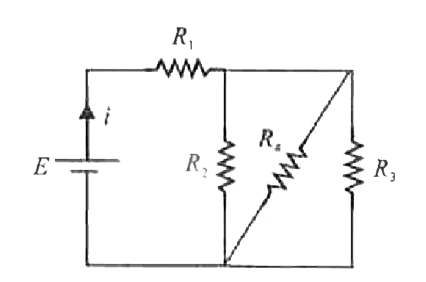 Solution in Kannada
Solution in Kannada
11.875
26.31
118.75
none of these
The correct Answer is:c
In given circuit three resistances R2,R4 and R3are parallel.
Let initially resistance in the circuit is RΩ Thus, V=I1R=5R....(1)
When addition resistance of 2.0Ω is added in the circuit then
V=4(R+2)...(2)
As voltage across the resistance is same in both cases,
∴5R=4R+8⇒R=8Ω
This resistance is in series with R1
:.R_( resultant) = R_(1) + R= 100+ 18.75 = 118.75 Omega
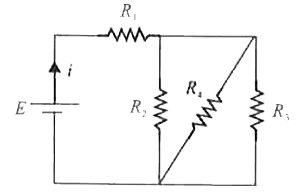
Topper's Solved these Questions
Similar Questions
The displacement time graph of a particle executing SHM is as shown in the figure. The corresponding force-time graph of the particle is-
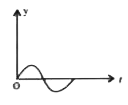
View SolutionThe twinkling effect of star light is due to
View SolutionCalculate equivalent resistance of two resistors R1andR2 in parallel where, R1=(6±0.2)ohm and R2=(3±0.1)ohm
View SolutionIn the circuit given E = 6.0 V, R_(1) = 100 ohms, R_(2) = R_(3) = 50 ohms, R_(4) = 75 ohms . The equivalent resistance of the circuit, in ohms, is
View SolutionAn infinite sequence of resistance is shown in the figure. The resultant between A and B will be, when R1=1ohm and R2=2ohm
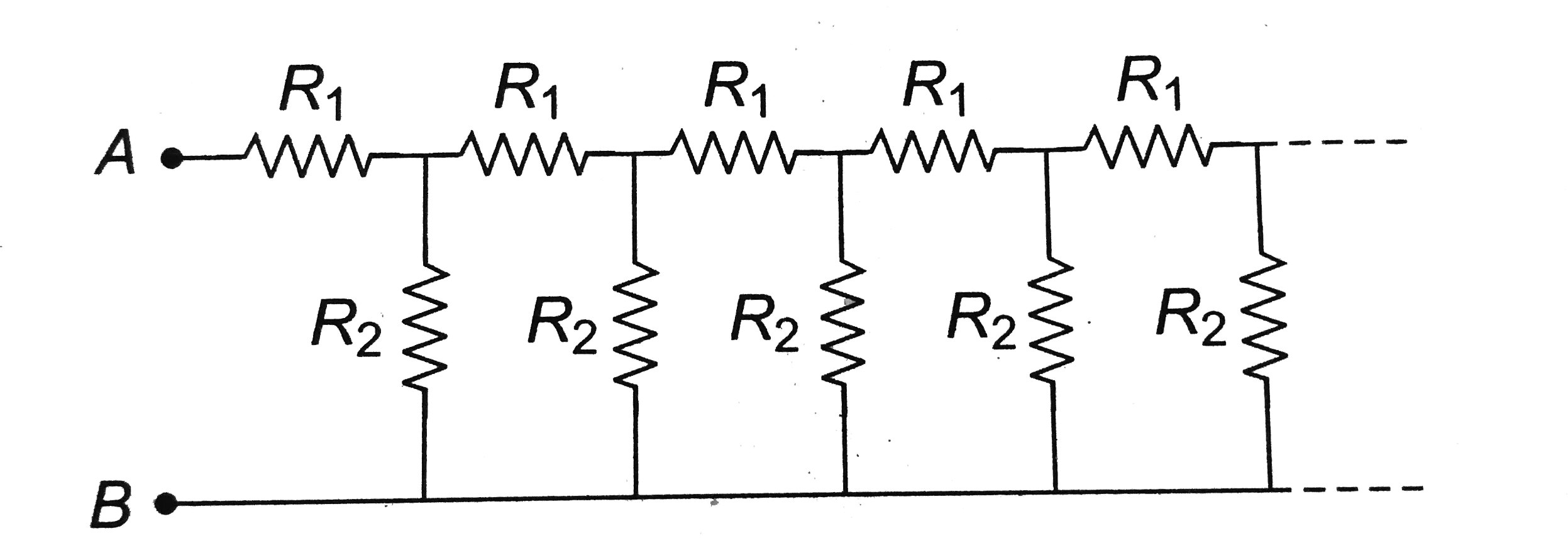
View SolutionTwo conductors of resistance R1(50±2) ohm and R2=(100±4) ohm are connected in (a) series and (b) parallel. Find the equivalent resistance.
View SolutionTwo resistance are measured in ohm and is given as:-
R1=3Ω±1%&R2=6Ω±2%
When they are connected in parallel, the percentage error in equivalent resistance is
View SolutionIf two resistors of R1 and R2 ohms are connected in parallel in an electric circuit to make an R ohm resistor, the value of R can be found from the equation,
1R=1R1+1R2
If R1 is decreasing at the rate of 1 ohm/sec and R2 i increasing at the rate of 0.5 ohm/sec, at what rate is R changing when R1=75 ohm and R2=50 ohm ?

View SolutionTwo resistors of resistances R_(1)=100 pm 3 ohm and R_(2)=200 pm 4 ohm are connected (a) in series, (b) in parallel. Find the equivalent resistance of the (a) series combination, (b) parallel combination. Use for (a) the relation R=R_(1)+R_(2) and for (b) 1/(R')=1/R_(1)+1/R_(2) and (Delta R')/R'^(2)=(Delta R_(1))/R_(1)^(2)+(Delta R_(2))/R_(2)^(2)
View SolutionIn the circuit given E = 6.0 volt, R_(1) = 100Omega, R_(2) = R_(3)=50Omega and R_(4)=75Omega . The equivalent resistance of the circuit, in ohms is
View SolutionTow resistance R_(1) = 50 pm 2 ohm and R_(2) = 60 pm connected in series , the equivalent resistance of the series combination in
View SolutionTwo resistors of resistances R_(1)=100 pm 3 ohm and R_(2)=200 pm 4 ohm are connected (a) in series, (b) in parallel. Find the equivalent resistance of the (a) series combination, (b) parallel combination. Use for (a) the relation R=R_(1)+R_(2) and for (b) 1/(R')=1/R_(1)+1/R_(2) and (Delta R')/R'^(2)=(Delta R_(1))/R_(1)^(2)+(Delta R_(2))/R_(2)^(2)
View Solutionदिखाये गये परिपथ में E=6.0V,R1=100Ω,R2=R3=50Ω,R4=75Ω है। परिपथ का तुल्य प्रतिरोध, Ω में होगा
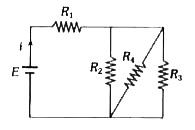
View SolutionTwo resistors of resistances R1=100±3 ohm and R2=200±4 ohm are connected (a) in series , (b) in parrallel. Find the equivalent resistance of the (a) series combination , (b) parallel combination . Use for (a) the relation R=R1+R2and for (b) 1R=1R1+1R2andΔR'R,2=ΔR1R21+ΔR2R22
View SolutionTwo resistance R1=50±2 ohm and R2=60 ohm connected in series , the equivalent resistance of the series combination in
View Solution
